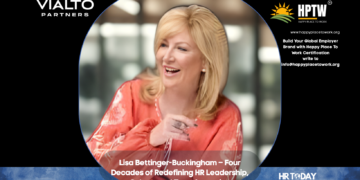Work, life, and mental well-being are three interconnected aspects of modern living that often find themselves in a constant struggle for balance. In a world where high-performance expectations at work intersect with family and community responsibilities, finding harmony can feel like a delicate balancing act. Juggling these demands requires constant adjustment, as both personal and professional fulfilment depend on achieving the right rhythm between ambition, responsibility, and well-being.
“Finding harmony between ambition, responsibility, and well-being is a delicate balancing act.”
To most women, the workplace is a double-edged sword. Career growth is a source of satisfaction and economic self-sufficiency, but it is often combined with the expectation of performing well, gaining credibility, and dispelling stereotypes. Combined with this is the anticipation of a nurturing presence in the home, and the equation tips to chronic stress, burnout, and emotional exhaustion. According to a 2024 IIM Ahmedabad study, approximately 67% of working women face difficulties with work-life balance, which is a major cause of stress.
“67% of working women face difficulties with work-life balance—this is not just a number, it’s a wake-up call.”

In today’s 24/7 digital world, work and life have become hopelessly intertwined. The expectation to answer emails at the crack of dawn, to hold early morning meetings, or to drive oneself beyond healthy boundaries has become the expected norm. Women’s mental health cannot be treated as an individual responsibility only; rather, organizations must intervene to establish a setting that promotes psychological safety, flexibility, and diversity. Provision of mental health support, paid mental health leave, and open discussions of stress and anxiety must be considered as standard as any other employee benefit. Leadership is also crucial; when senior professionals champion and model work-life balance, it sends a message to the rest of the staff that these are not buzzwords but real priorities.
“Work-life balance is not a buzzword—it’s a real priority.”
Another heavy aspect that keeps women on the back foot is the imposter syndrome, or constant self-doubt despite evident success. Most women feel the need to perform twice as well to be able to show themselves competent, lest one misstep will perpetuate stereotypes about their ability. This relentless quest for perfection, admirable as it is, is also draining. A liberating shift occurs when women embrace their success without apology, acknowledging that they are worthy of sitting at the table, not merely given the seat.
“Women are worthy of sitting at the table, not merely given the seat.”
Outside of the workplace, cultural expectations add yet another level of complexity. Cultural narrative has conditioned the tale of the “perfect woman,” able to effortlessly balance work, home, children, and self. But this is far from reality. Balance is not a result of doing everything flawlessly but of being able to juggle one’s responsibilities without guilt. It means knowing that stepping back is not weakness but a sign of wisdom. And seeking assistance—be it from family, professional circles, or mental health professionals—must be encouraged and made acceptable.
“Balance means knowing that stepping back is not weakness but wisdom.”

Women’s mental health is also intrinsically linked to the idea of community. The strength of shared experience, mentorship, and peer support cannot be underestimated. When women are supportive of one another—whether through professional mentorship, lobbying for improved workplace policies, or merely listening without judgment—it creates a group strength that empowers all of those involved. A workplace that provides such connections is, by its nature, healthier and more resilient.
“Supportive communities create resilient workplaces.”
Organizations that are committed to diversity and inclusion need to appreciate that real inclusion goes beyond hiring figures. It is more about creating a culture where women can feel safe and thrive without the fear of being judged for choosing flexible work schedules, taking care of their health, or expecting equitable recognition of their work. Maternity support, childcare facilities, and equal pay policies are not merely compliance measures; they are about creating workplaces that value human capital comprehensively.
“Real inclusion means creating workplaces where women can thrive without fear.”
It’s time to shift the conversation about work, life, and mental health from mere acknowledgment to concrete action. The pursuit is not for special treatment, but for genuine equality—equal opportunities, equal recognition, and the freedom to define success individually. This is a shared endeavour, aimed at creating a world where everyone, regardless of gender, can thrive professionally and personally, without sacrificing mental well-being. The future of work, and ultimately, our collective future, depends on it.
“The future of work depends on mental well-being, equity, and real inclusion.”
Disclaimer
The views and opinions expressed in this article are solely my own or maybe gathered from information available on the internet and do not reflect the views, opinions, or policies of my current employer. This content is for informational purposes only and is not intended to represent the stance or position of any organization with which I am affiliated.
Read Also : Entering 2025, TA Leaders’ Success Built on More than Just Hiring, Says The Josh Bersin Company
People Analytics Teams Still Struggle to Deliver Business Impact, Warns The Josh Bersin Company
ESG and Women’s Leadership: Driving Sustainability and Inclusion
Learning and Development Trends for 2025: Shaping the Future of Workplace Learning












Comments 26